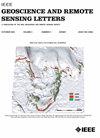基于判别自适应正则化框架的SAR图像船舶分类迁移学习
IF 4
3区 地球科学
Q2 ENGINEERING, ELECTRICAL & ELECTRONIC
引用次数: 18
摘要
合成孔径雷达(SAR)图像中的船舶分类对于处理各种海洋问题具有重要意义。尽管传统的监督学习方法近年来取得了巨大的成功,但它们受到标记训练数据不足的限制。本文提出了一种新的无监督域自适应(DA)方法,称为基于判别自适应正则化框架的迁移学习(D-ARTL),以解决SAR图像域(即目标域(TD))中根本没有标记训练数据的问题。D-ARTL改进了原ARTL,增加了新的源判别信息保存(SDIP)正则化项。这种改进实现了类间判别能力从源域(SD)到TD的有效转移,同时实现了跨域分布的对齐。大量的实验证明,D-ARTL通过传输自动识别系统(AIS)信息,在SAR图像中的船舶分类任务上优于最先进的方法。本文章由计算机程序翻译,如有差异,请以英文原文为准。
Discriminative Adaptation Regularization Framework-Based Transfer Learning for Ship Classification in SAR Images
Ship classification in synthetic-aperture radar (SAR) images is of great significance for dealing with various marine matters. Although traditional supervised learning methods have recently achieved dramatic successes, but they are limited by the insufficient labeled training data. This letter presents a novel unsupervised domain adaptation (DA) method, termed as discriminative adaptation regularization framework-based transfer learning (D-ARTL), to address the problem in case that there is no labeled training data available at all in the SAR image domain, i.e., target domain (TD). D-ARTL improves the original ARTL by adding a novel source discriminative information preservation (SDIP) regularization term. This improvement achieves an efficient transfer of interclass discriminative ability from source domain (SD) to TD, while achieving the alignment of cross-domain distributions. Extensive experiments have verified that D-ARTL outperforms state-of-the-art methods on the task of ship classification in SAR images by transferring the automatic identification system (AIS) information.
求助全文
通过发布文献求助,成功后即可免费获取论文全文。
去求助
来源期刊

IEEE Geoscience and Remote Sensing Letters
工程技术-地球化学与地球物理
CiteScore
7.60
自引率
12.50%
发文量
1113
审稿时长
3.4 months
期刊介绍:
IEEE Geoscience and Remote Sensing Letters (GRSL) is a monthly publication for short papers (maximum length 5 pages) addressing new ideas and formative concepts in remote sensing as well as important new and timely results and concepts. Papers should relate to the theory, concepts and techniques of science and engineering as applied to sensing the earth, oceans, atmosphere, and space, and the processing, interpretation, and dissemination of this information. The technical content of papers must be both new and significant. Experimental data must be complete and include sufficient description of experimental apparatus, methods, and relevant experimental conditions. GRSL encourages the incorporation of "extended objects" or "multimedia" such as animations to enhance the shorter papers.
 求助内容:
求助内容: 应助结果提醒方式:
应助结果提醒方式:


